Sandbox tree
Scientific name: Hura crepitans
POWO Status: Tree
IUCN Red List threat level: Least Concern
GPS Location: 17° 42′ 54.39″ N, 64° 49′ 48.61″ W
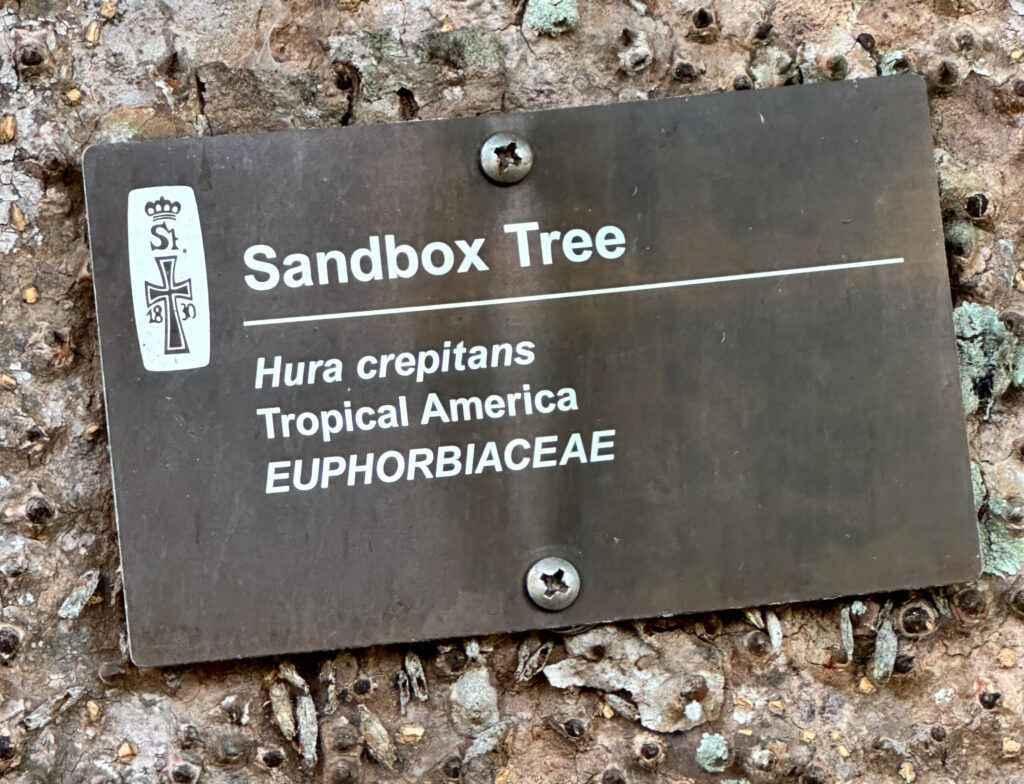
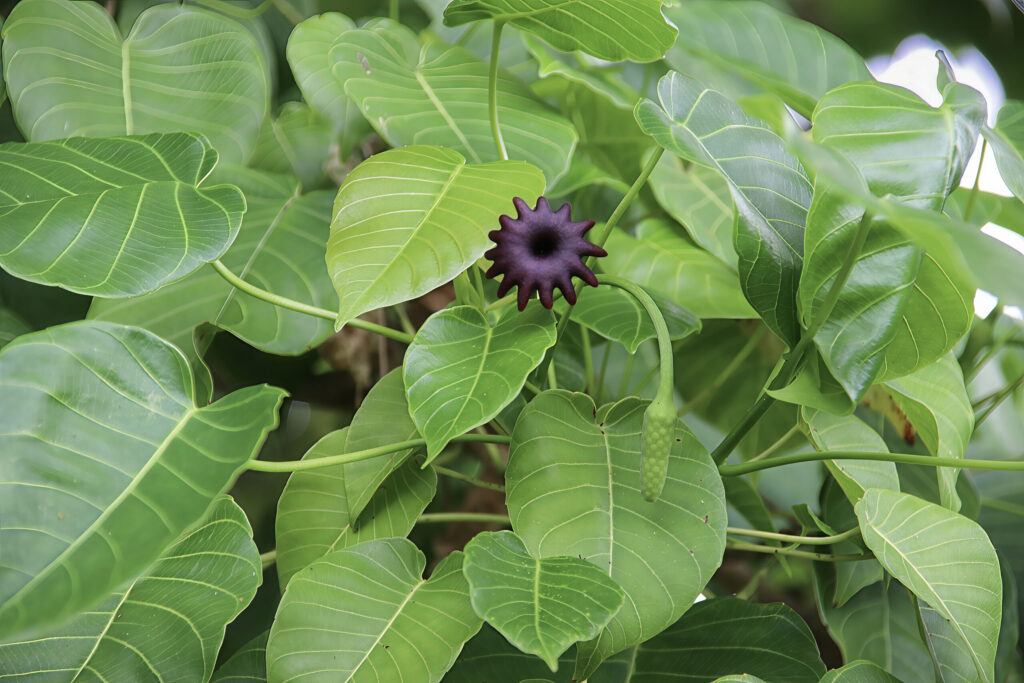
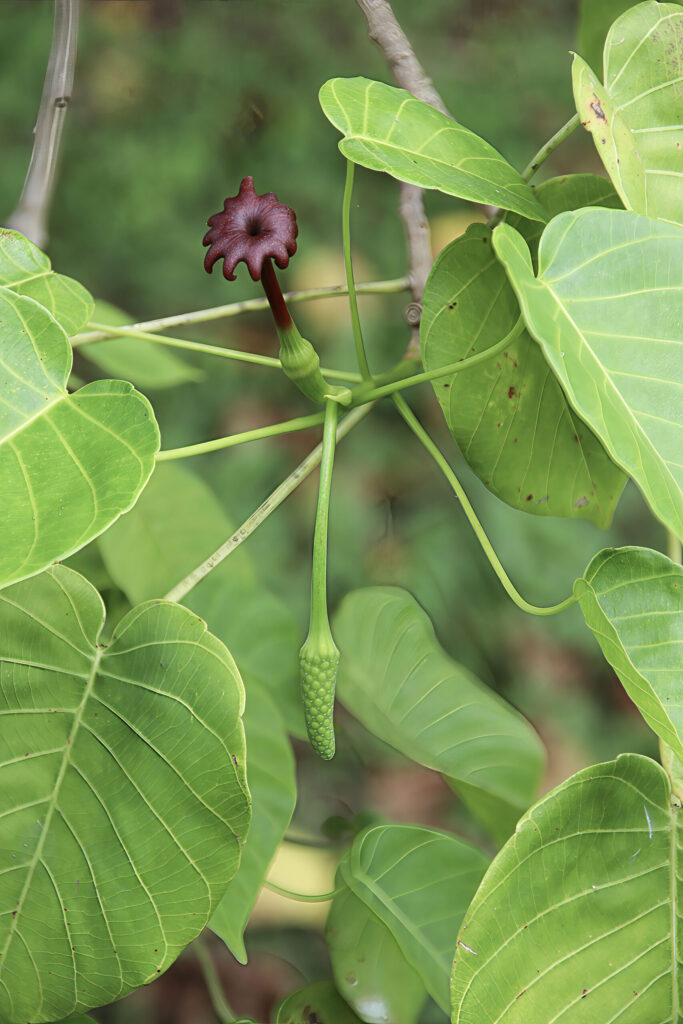
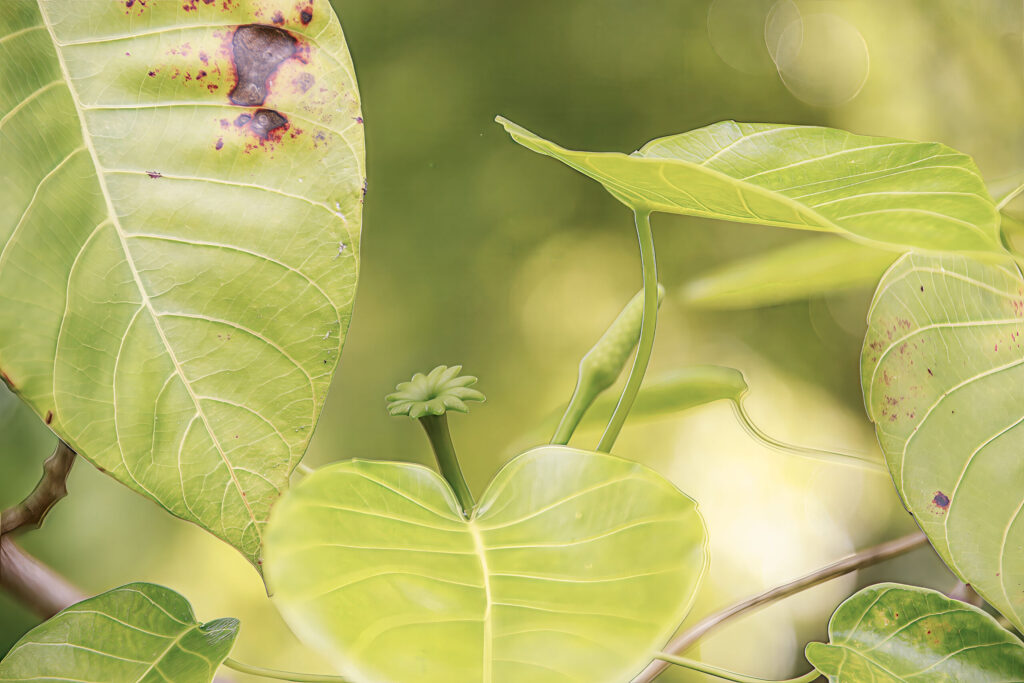
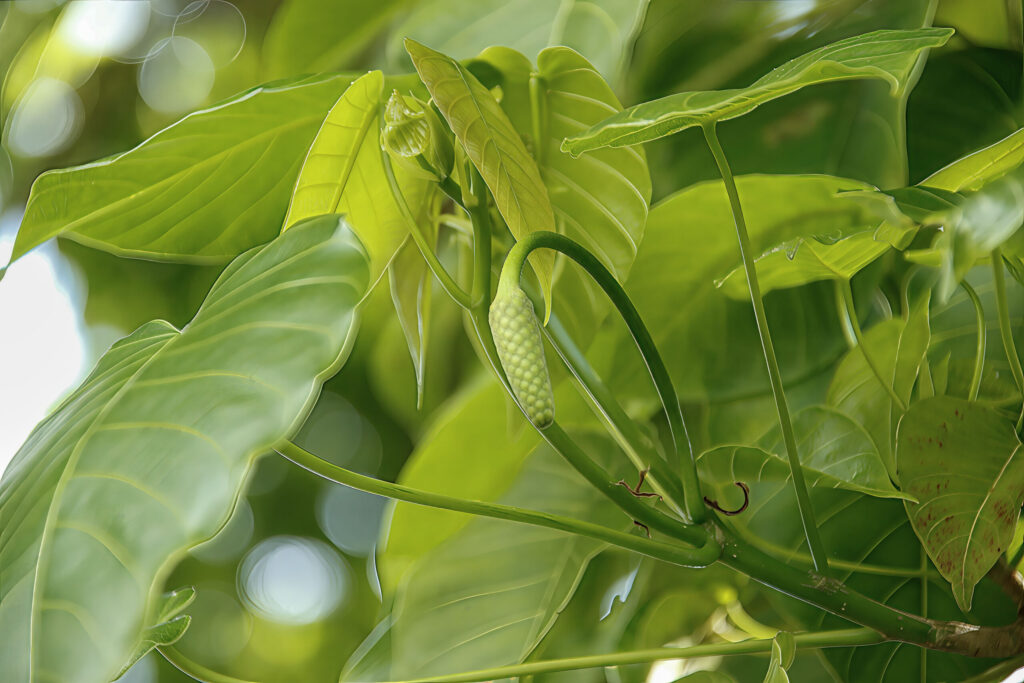
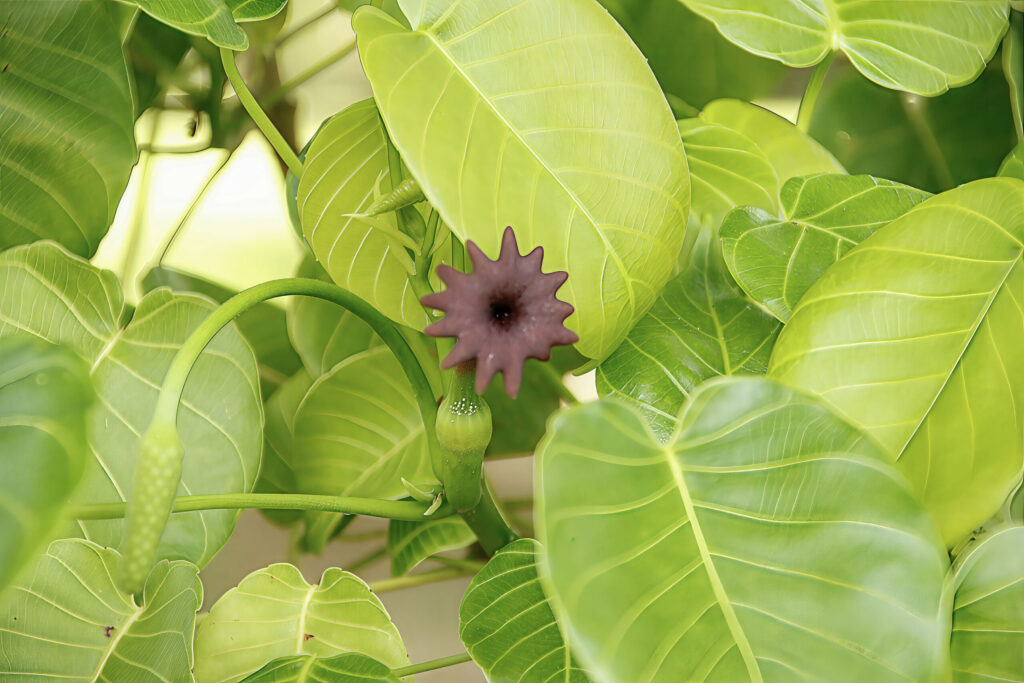
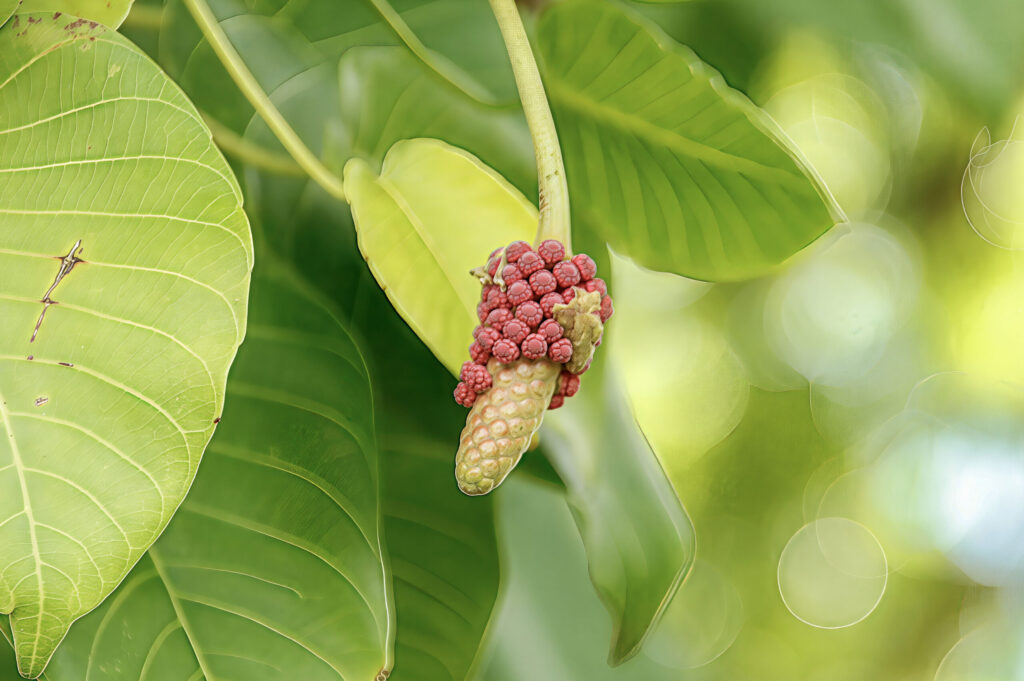
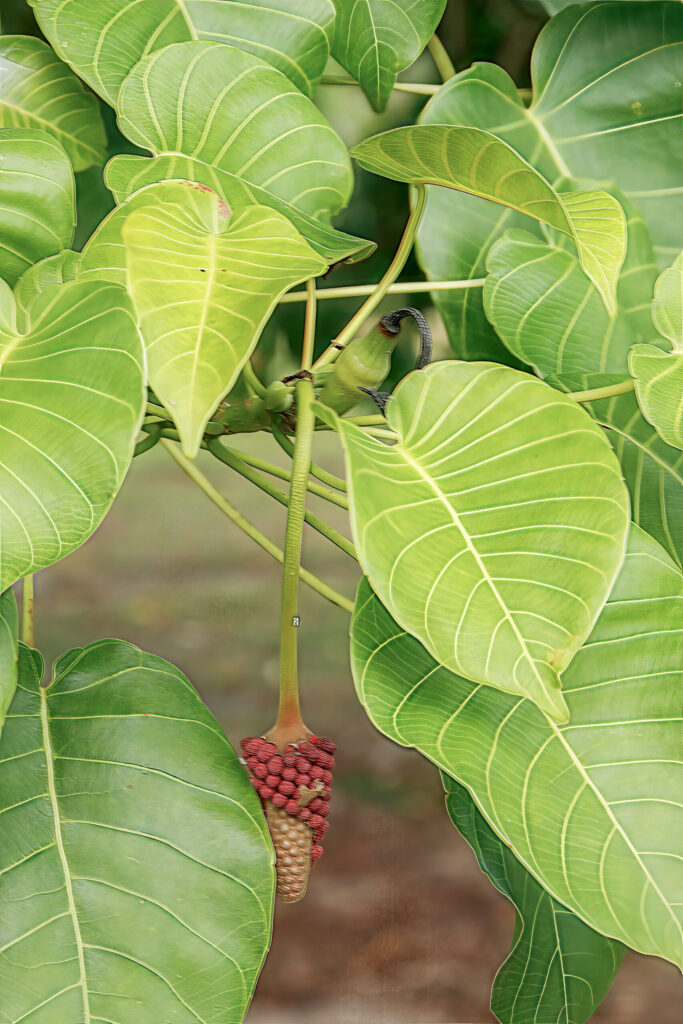
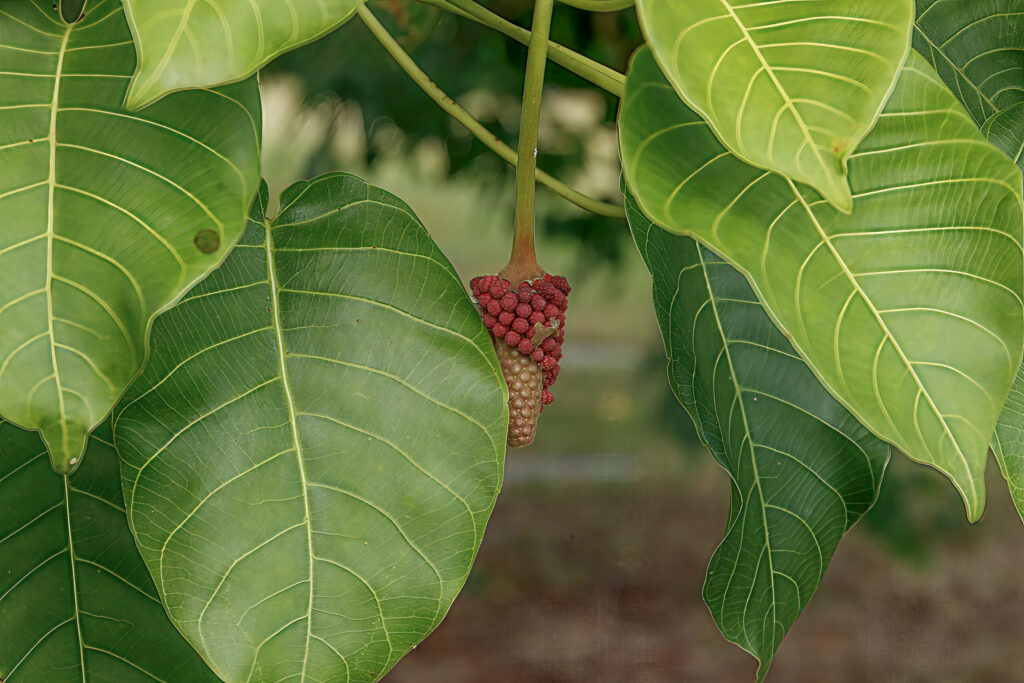
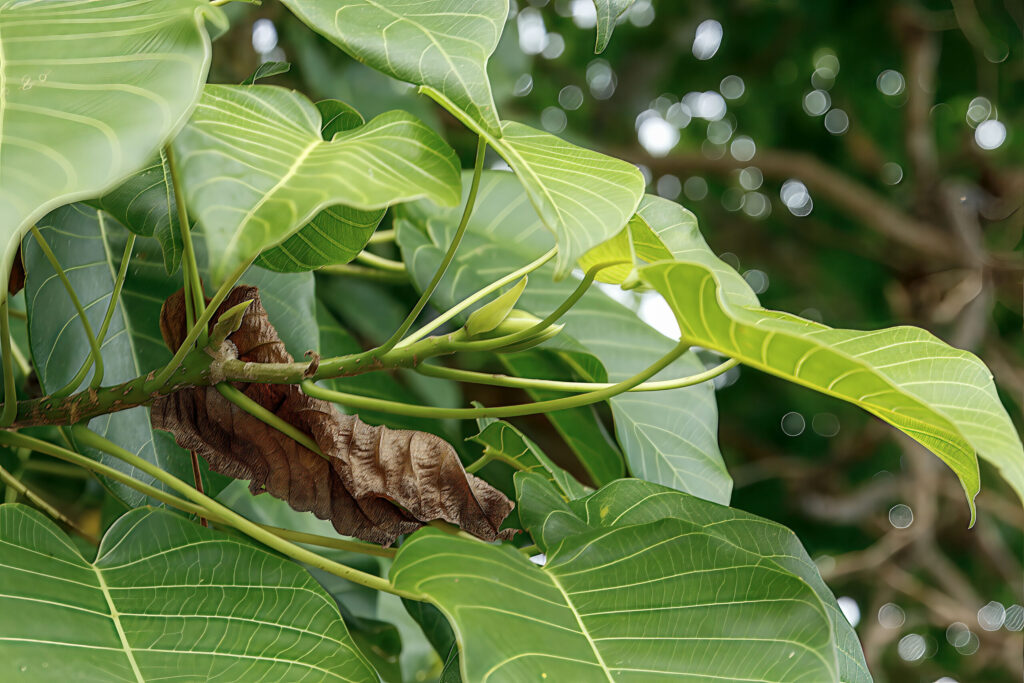
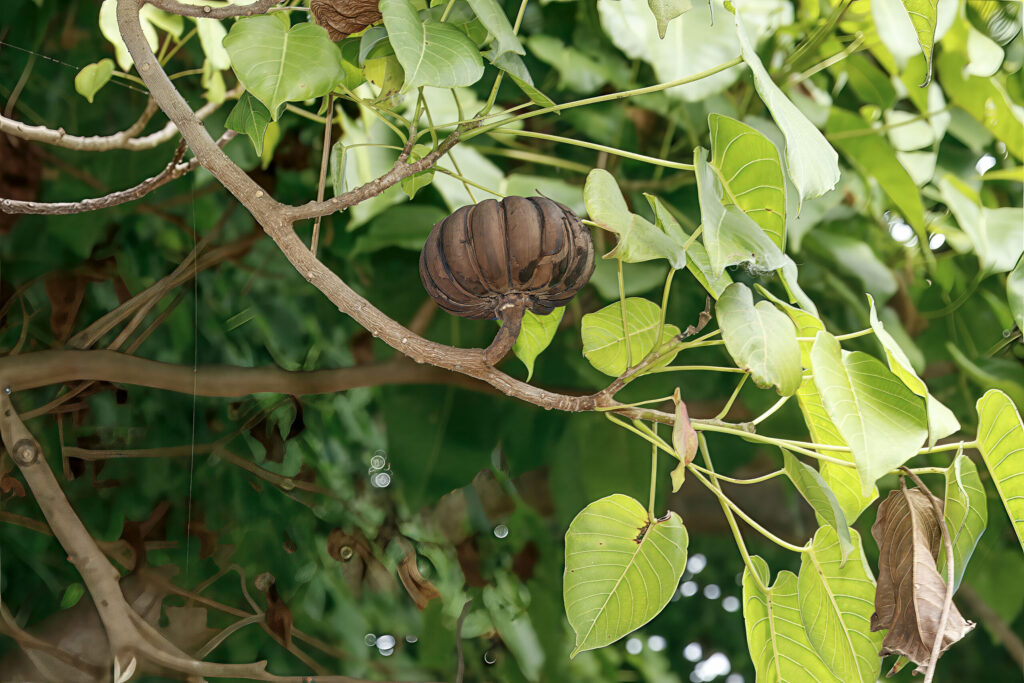
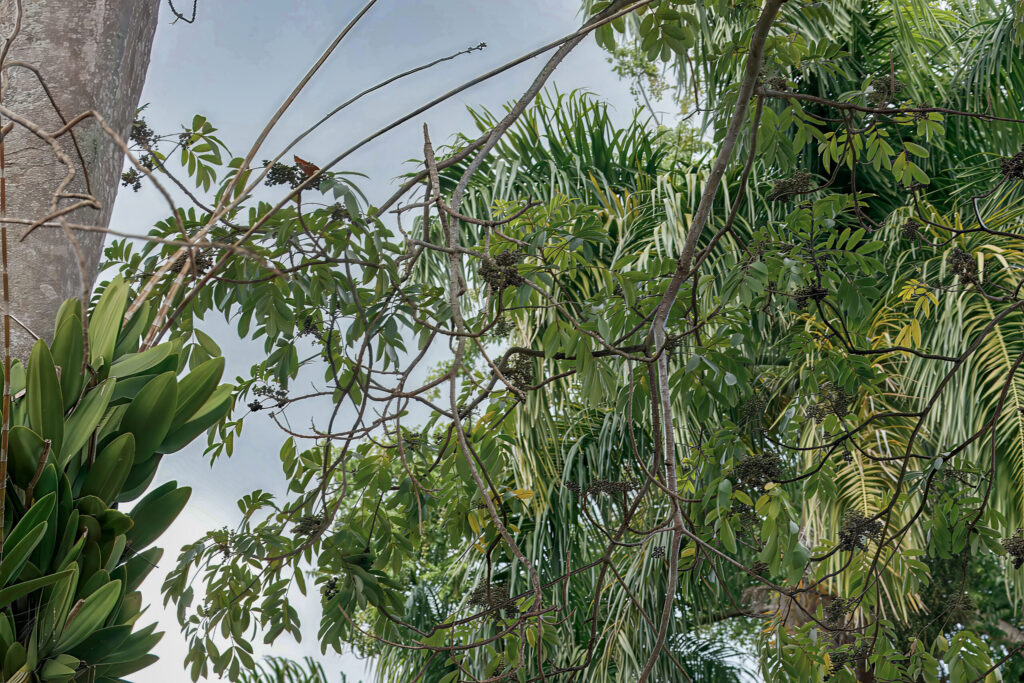
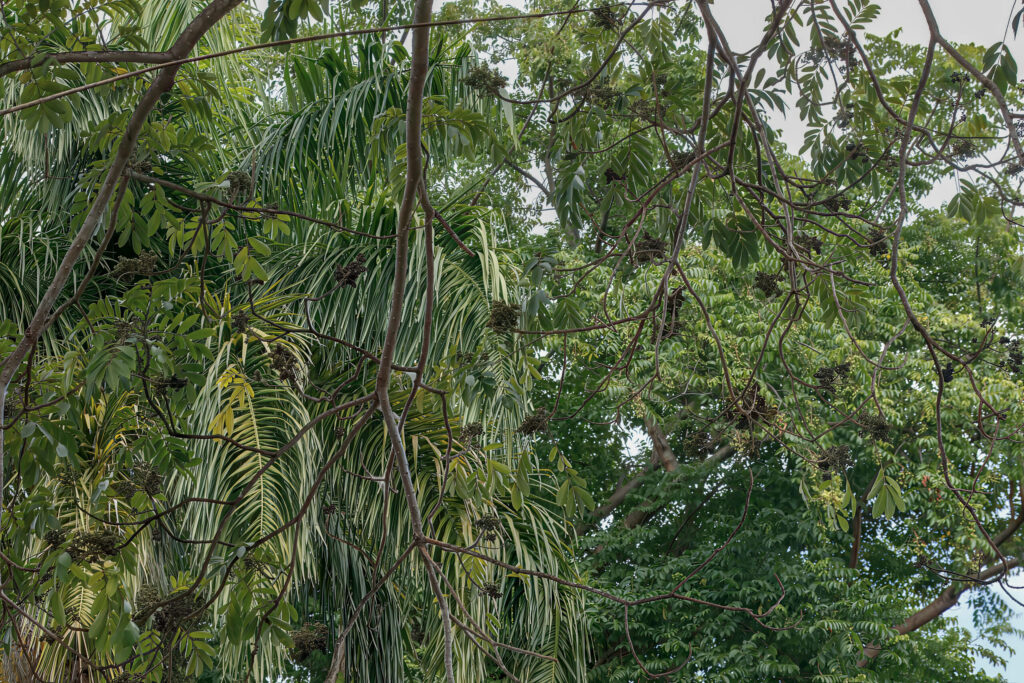
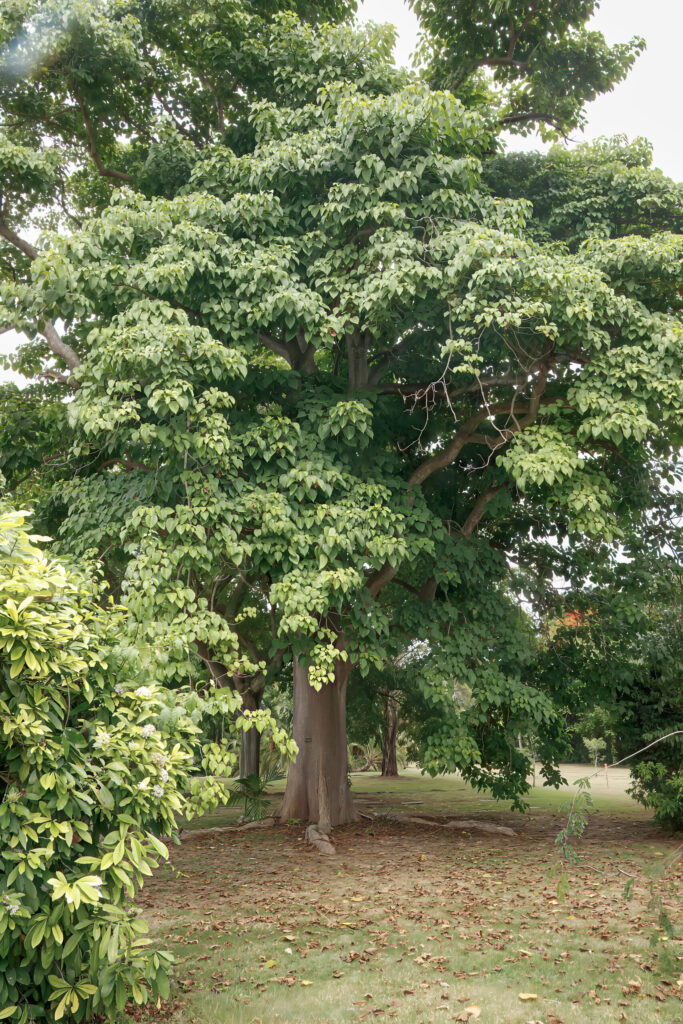
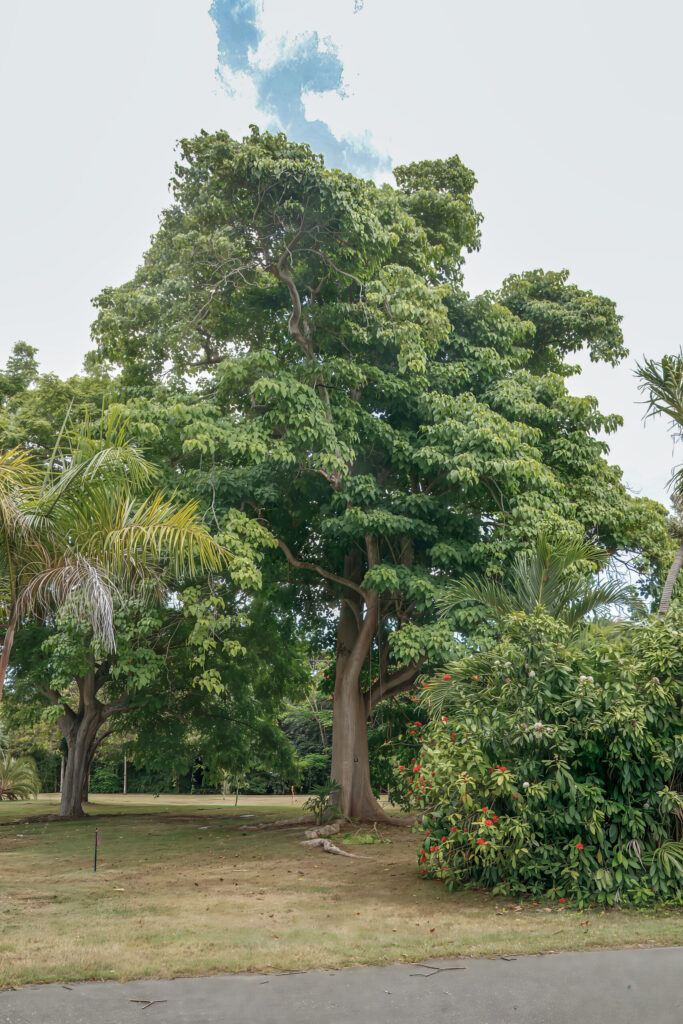
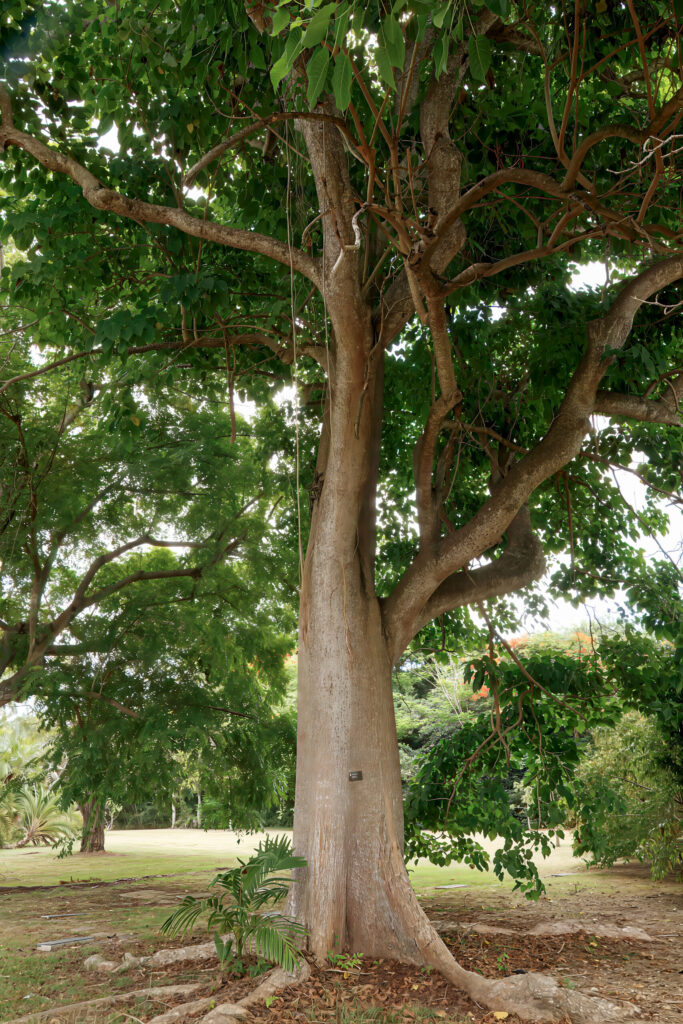
Observations:
Phenological Markers for Sandbox Tree (Hura crepitans)
1. Flowering
The Sandbox Tree is monoecious (having separate male and female flowers on the same tree), and its flowering is quite distinct.
- Male flowers: Tiny, red, and borne on long spikes; often appear in clusters.
- Female flowers: Larger, solitary, and found near the ends of branches.
- Flowering is often seasonal, triggered by changes in rainfall or dry-to-wet transitions.
Observation tips:
- Record the first appearance of male and female flowers—they are visually quite different.
- Track peak flowering and note if male and female flowering periods overlap.
- Observe and photograph insect or bird activity, which may aid in pollination.
2. Fruit Development (and Explosive Dispersal)
This is perhaps the most striking feature of the Sandbox Tree:
- After successful pollination, large, ridged capsules (fruit) begin to form.
- These fruits mature over several weeks to months, becoming hard and woody.
- When dry, they explode with a loud crack, dispersing seeds at high speed—sometimes up to 100 feet away.
Observation tips:
- Record fruit set after flowering—how many capsules form and their size.
- Track maturation: green → brown/dry.
- Note and (if safe) photograph exploded fruit husks on the ground to track dispersal timing.
⚠️ Caution: Mature fruits can explode with considerable force. Avoid close handling during late stages of drying.
3. Leaf Flush and Drop
Though it’s generally deciduous or semi-deciduous depending on rainfall, the Sandbox Tree often shows leaf drop prior to flowering or in dry seasons.
- Leaf drop may be partial or complete.
- New leaf flush typically follows shortly after flowering or rain.
Observation tips:
- Track leaf yellowing and fall (partial or full).
- Record timing of new leaf emergence—new leaves are bright green and often shiny.
- Compare foliage density at monthly intervals.
4. Bark and Defensive Features
While not a phenophase, the thorn-covered bark is a year-round feature that may show variation in epiphyte or lichen coverage with seasonal moisture.
Observation tips:
- Photograph bark regularly to track lichen growth or moss coverage as environmental indicators.
Field Notes Strategy
Given its dramatic traits, the Sandbox Tree offers strong phenological stages to document:
| Phenophase | Description | Timeframe (approx.) |
|---|---|---|
| Flowering | Male/female flower emergence | After dry season or rainfall |
| Fruiting | Capsules form, mature, explode | 1–2 months post-flowering |
| Leaf drop | Prior to flowering or dry season | Dry months |
| Leaf flush | Post-flowering or after rains | Early wet season |
